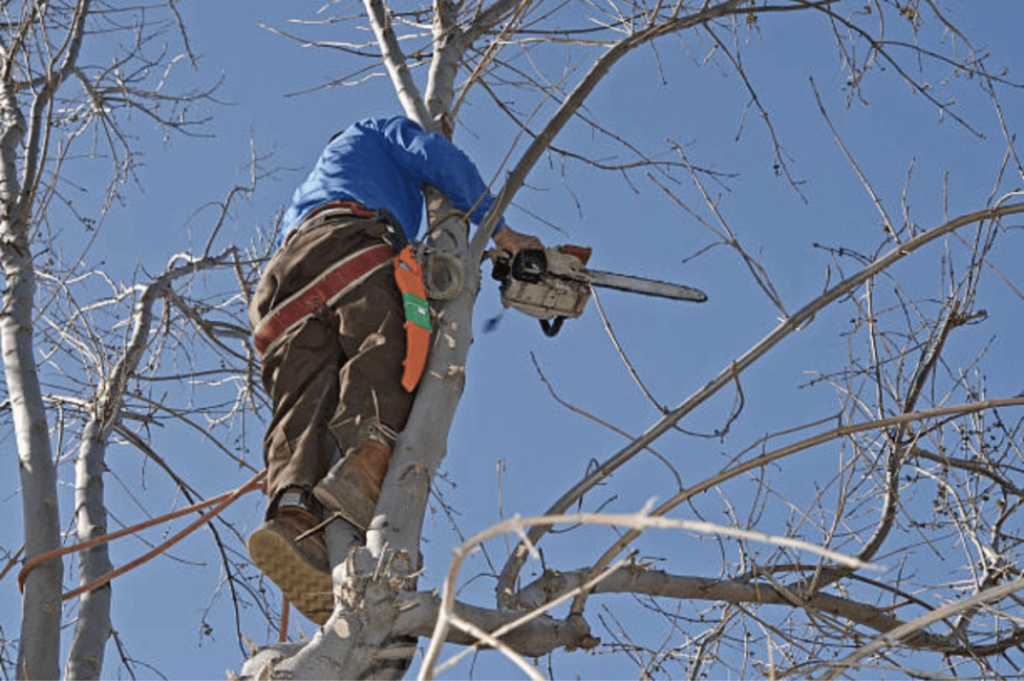Trimming is an important part of maintaining a healthy, long-lasting tree. Regular trimming ensures that trees produce new growth in the spring and don’t put all their energy into many smaller branches. It’s also important to trim away dead, diseased branches that might become hazardous later. On top of that, trimming can keep your trees looking aesthetically pleasing for a better-looking yard. Here’s our guide on yearly tree trimming from our team at Red’s Tree Service.
The Best Time to Trim
According to our expert team, the best time to trim or trim trees and shrubs is during the cooler winter months. Most trees are dormant from November through March, and this makes it the ideal time for the following reasons:
- Getting the job done before the weather warms means you’re not cutting into new growth.
- Trees are less susceptible to insects or disease during winter. This makes the process less of a hassle.
- There is less impact on the surrounding landscape. You and our team can easily see what we’re doing while all the leaves are gone.
- Trees heal faster, so by the time spring comes back around, your tree will be clean and healthy again.
- It’s a lot easier to see the true shape of trees in the winter because their foliage is gone.
- When it starts to get cold outside, you want to stay indoors and keep warm. The winter season is the perfect time to get a rest from tiring yard work.
All of this being said, late-winter trimming isn’t a one-size-fits-all solution. Some trees and shrubs should be trimmed after they’ve bloomed in the spring or summer. Trimming too early can damage or remove buds. This drastically reduces the number of flowers that appear during bloom time. This can reduce the aesthetic appeal of your trees as well. Examples of trees to avoid trimming in the winter include magnolia, crabapple, and redbud trees.

Why Is Trimming Necessary?
Trimming is a key part of all tree and plant maintenance. It has many environmental health and aesthetic benefits which include:
- Increases overall plant health—Remove branch stubs, branches that rub together, and dead or dying branches injured by disease, insect infestation, animals, storms, or other damage.
- Maintain purposeful plants in an area—Encourage a desired plant form or special garden forms, as well as flower and fruit development. This can also help maintain a dense hedge.
- Improve curb appeal—Keep shrubs well-proportioned and dense, as well as control plant size and shape. On top of that, remove unwanted branches, waterspouts, suckers, and undesirable fruiting structures that detract from plant appearance.
- Protect your property and prevent safety hazards—Trim branches that overhang homes, parking areas, sidewalks, and any place where falling limbs could injure people or damage property. Eliminate branches that interact with street lights, traffic signals, or overhead wires and any branches that obscure vision at intersections. Remove dead branches and have hazardous trees taken down.
What’s The Worst Time of Year to Trim?
If you don’t want to or are unable to work during the wintertime, you may consider other options for tree trimming times. If this is the case, you may ask what time of year to avoid this kind of job.
For most tree care specialists, autumn is considered the worst time to trim a tree. Cuts take longer to heal during this period because the tree is going into dormancy. When trees with fungal diseases release large numbers of spores after being cut, the increased risk of infection from the released sports increases. You can put your trees at risk if you decide to trim them at this time of year.
Of course, there may be circumstances where fall trimming is necessary. If the branches pose a safety hazard or threaten property, we advise taking them down right then no matter what season it is.
Tips for Winter Trimming
Not everyone likes working out in the cold. To keep the process quick and easy, here’s some tips for tree trimming in cooler weather.
- Don’t trim too early in the winter, as incisions can dry out if the temperature drops well below freezing.
- Trim on a mild, dry day. Not only does this make the job more pleasant for you, but it also helps to prevent the spreading of waterborne plant diseases or damage from cold temperatures.
- When trimming, first trim out dead and diseased branches, especially those caused by the winter’s snow and ice.
- Remove overgrown and smaller branches to increase light and air at the top of the tree.
- Unwanted lower branches on all evergreen shrubs and trees should be removed in late winter.
- Cut branches at the node, the point at which one branch or twig attaches to another.
- In general, your goal is to keep the branches that develop or maintain the structure of the tree.

Get the best at Red’s Tree Service
With Red’s Tree Service’s all-inclusive commercial tree service, your yard will be completely transformed. Whether you are interested in beautifying your yard, cleaning up after a storm, or requiring emergency tree service, our commercial tree service covers everything you need.
With over forty years of experience, our family-owned and operated tree service delivers you the best results. We have the tools, experience, and equipment to take care of your trees and leave your yard safe, healthy, and beautiful for years to come. Contact Red’s Tree Service in Memphis, Collierville, and the Mid-South area for your free estimate today!
